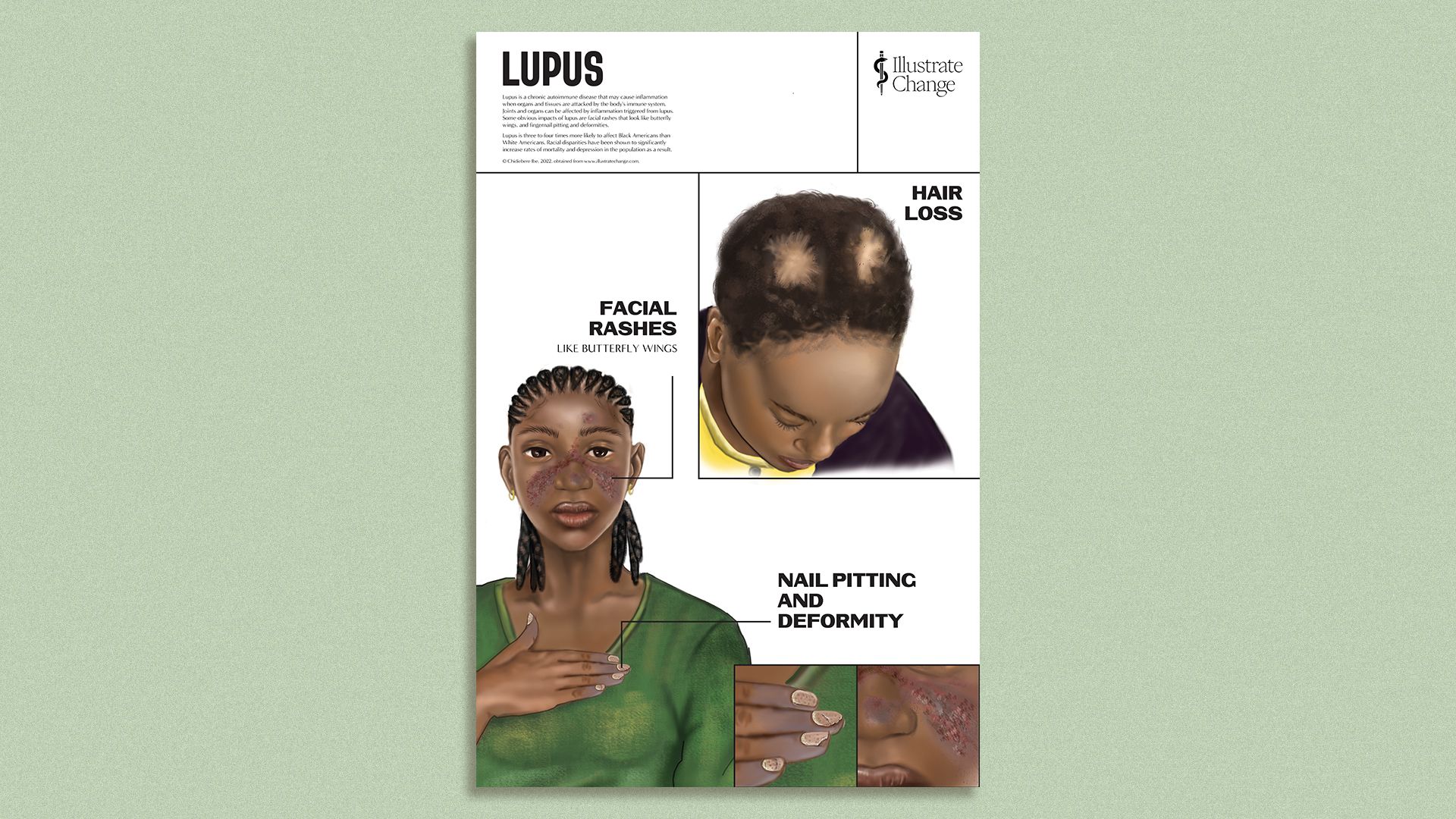Campaign aims to create "world’s largest library" of diverse medical illustrations

Illustration by Chidiebere Ibe. Courtesy of https://www.illustratechange.com.
Chidiebere Ibe, whose illustration of a Black fetus went viral a year and a half ago, is helping launch a campaign to diversify images used in medical textbooks and diagnosis manuals.
Why it matters: The scarcity of such illustrations is an example of — and can lead to — racial inequities in health care.
- Studies have found about half of U.S. medical students learn visually, making illustrations a key component of their education.
- Yet only 5% of medical images show dark skin, according to Illustrate Change, the new campaign aiming to create "the world's largest library of BIPOC medical illustrations."
Details: The campaign, a collaboration between Johnson & Johnson, the Association of Medical Illustrators (AMI) and Ibe, was announced late last month. It includes a fellowship program, a website with downloadable images and plans to promote the materials to medical schools.
- The images feature dark-skinned people with lupus, cataracts, breast cancer and other ailments. They also include information on how communities of color are affected by a given disease or condition.
- Jorge Leon, director of global community impact at Johnson & Johnson, says 10 illustrators will be chosen for a fellowship through the AMI and will receive training and a cash award.
- The goal is for each fellow to create 10 illustrations featuring "additional communities and skin presentations" for the Illustrate Change library by the middle of next year.
What they're saying: Ibe tells Axios Latino that the viral image from 2021 challenged medical professionals "to reconsider their approach to health care by not dismissing patients who didn’t look like them."
- The planned images can also help people when they search online for their symptoms, "ensuring that patients are involved in their own health care," Ibe says.
No comments:
Post a Comment